#Yangzhou Museum
Explore tagged Tumblr posts
Text
[Hanfu · 漢服]Chinese【Late Tang Dynasty-Five Dynasties & Ten Kingdoms Period(907-979)】Traditional Clothing Hanfu Reference to Dunhuang Silk Painting
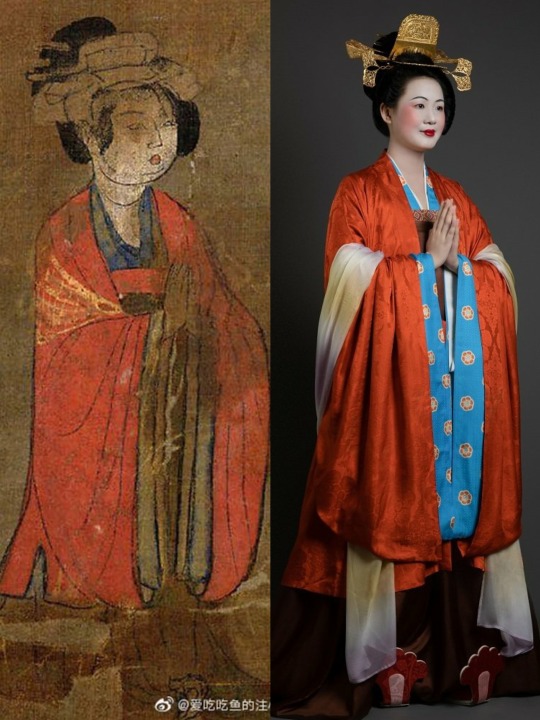
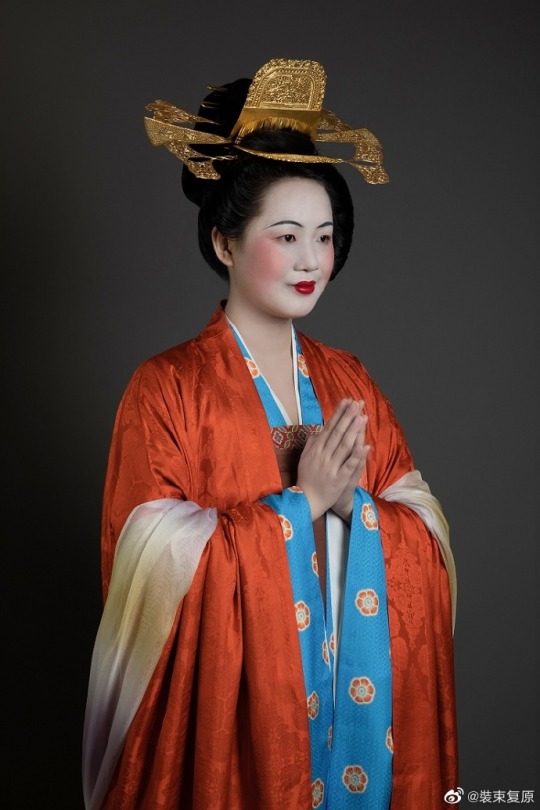
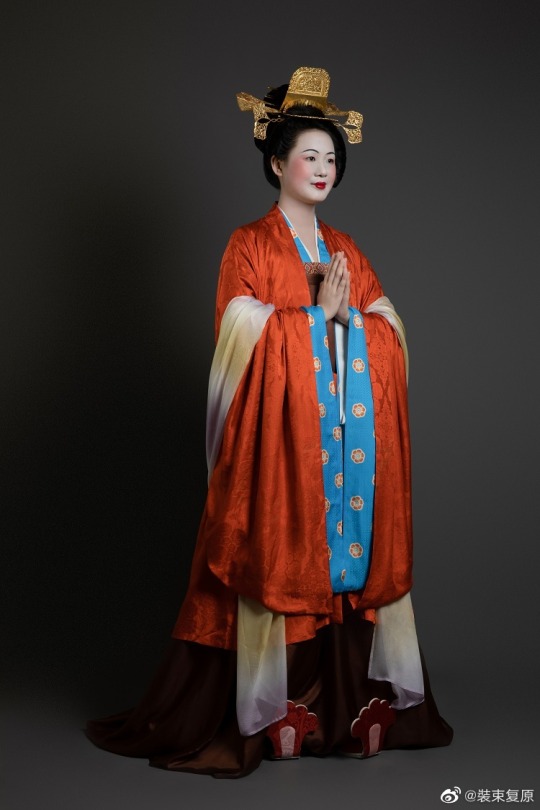
【Historical Reference Artifacts】:
1.China Five Dynasties Silk Painting:
Name: 《药师琉璃光如来》 Medium: Color on silk Artist: Anonymous Dimension: 72.5 x 55.5 cm Location: The British Museum
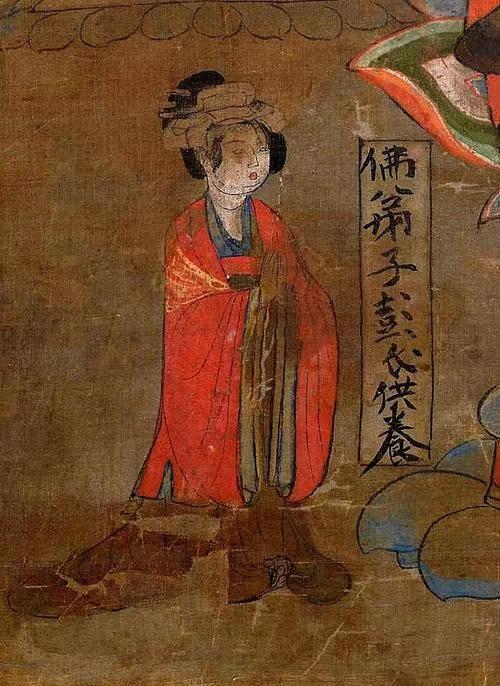
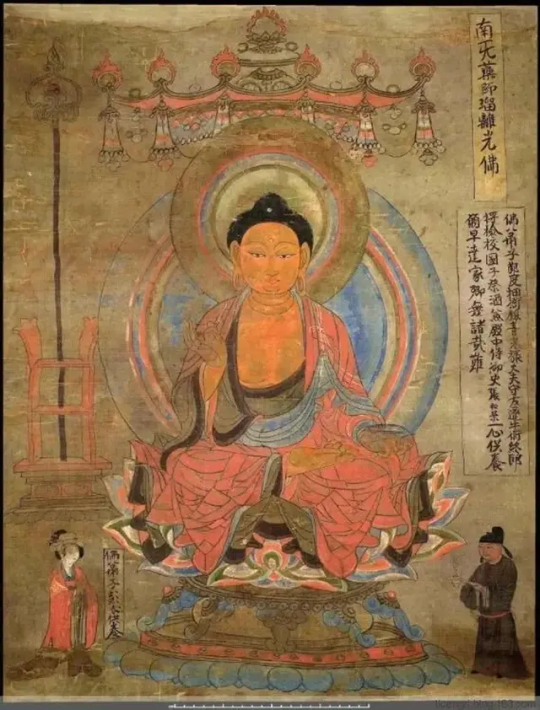
2.China Northern Song Dynasty Silk Painting:《释迦说法图》(around 951-1000)

【History Note】
During the late Tang Dynasty and the Five Dynasties, the attire of aristocratic women continued the extravagant and gorgeous style of the mid-Tang Dynasty. The size of shirts and skirts further increased, and high buns and large-sleeved shirts and skirts were popular, showing an aesthetic trend from wide and puffy to slender.
With such changes in fashion, slender, gorgeous and elegant blouses and long skirts have become the attire for women at that time to attend formal occasions. Paired with a grand and square bun with a single hairpin, slender and flexible flower hairpins on both sides, and a delicate and gorgeous gold comb in the front of the bun, the overall look is more solemn, elegant, gorgeous and brilliant.
The comb worn in this outfit was restored from the gold comb with Jile Feitian pattern unearthed in Sanyuan Road, Yangzhou. It is huge in size and exquisite in craftsmanship, which fully demonstrates the superb level of gold jewelry production at that time. It is still shining brightly after more than a thousand years.
The woman wears a blue printed shirt with a long skirt, and a large-sleeved shawl made of "Crimson Dabao Xianghua Ling/大宝相花绫" on the outside, with a silk wrapped around her shoulders. This is the typical attire of female donor of Dunhuang silk paintings at that time, and is full of the rhythm of the late Tang Dynasty and the Five Dynasties beauty standard.
________________________________
📸Recreation Work:@裝束复原
🔗Weibo :https://weibo.com/1656910125/N4Gil06QV
________________________________
#chinese hanfu#late tang dynasty#five dynasties and ten kingdoms#hanfu#hanfu accessories#hanfu_challenge#chinese traditional clothing#china#chinese#hanfu history#chinese fashion history#historical fashion#hanfu art#hanfu girl#漢服#汉服#中華風#chinese fashion#historical hairstyle#裝束复原
140 notes
·
View notes
Text


Pan Yuliang (Chinese, 1895-1977), Woman Watching a Cat, 1964, 64 x 90 cm, Anhui Museum, Hefei, China
Pan Yuliang (Chinese: 潘玉良, 14 June 1895 – 1977), born in Yangzhou as Chen Xiuqing, and was renamed Zhang Yuliang (張玉良) when adopted by her maternal uncle after the early passing of her parents.
Chinese painter, renowned as the #firstwoman in the country to paint in the Western style. She had studied in Shanghai and Paris. Because her modernist works caused controversy and drew severe criticism in China during the 1930s, Pan returned to Paris in 1937 to live and work for the next 40 years. She taught at the École des Beaux Arts, won several awards for her work, had exhibits internationally in Europe, the United States and Japan, and was collected by major institutions.
In 1985 after her death, much of her work was transported to China, collected by the National Art Museum in the capital of Beijing, the larger part are collected by the Anhui Museum in Hefei, the capital of Anhui Province.
Significant paintings, sculptures and prints are still conserved in France in the collection of the Cernuschi museum.
Her life as an artist has been portrayed in novels and film in China and the United States. Her art evolved within the flux of transformations where conflicting dichotomies of East and West, tradition and modernity, male chauvinism and emerging feminism co-existed.
Pan is also figured as who engaged with labels, such as " contemporary/modern," " Chinese," and " woman" artist, while questioning them. Despite being remembered for introducing Western paintings to China, she was able to provide a new lens to how these women were seen through her paintings as not just objects but subjects. Via Wikipedia
.
.
.
Thank you to Maryellen Brown for inspiration.
.
.
.
#PanYuliang #Chinese #潘玉良 #ChenXiuqing #ZhangYuliang #張玉良 #Pioneer #femalepioneer #womensart #artbywomen #Yuliang #ChineseWomen #ChineseContemporaryArt #ChineseArt #modernist
1 note
·
View note
Text

When I die
my words will scatter
like fallen leaves.
All I have made
blown carelessly
to the Four Corners.
This is both
heartbreaking
and amusing.
They are
not really mine
anyway.
Hold on to nothing,
you become free
to do anything.
─ Han Shan
● 寒山 Han Shan ,寒山和尚,唐代著名詩僧,居浙江天台寒巖,因稱寒山子或寒山。寒山、拾得、豐幹三人一起隱居於天台山國清寺,被譽為“國清三隱”。好吟詩唱偈,有詩三百馀首,後人輯為《寒山子詩集》���卷。(9th century) He was a Chinese Buddhist and Taoist figure associated with a collection of poems from the Chinese Tang Dynasty in the Taoist and Chan tradition. No one knows who he was, when he lived and died, or whether he actually existed. In the Chinese Buddhist tradition, Hanshan and his sidekick Shide are honored as emanations of the bodhisattvas Mañjuśrī and Samantabhadra, respectively. In Japanese and Chinese paintings, Hanshan is often depicted together with Shide or with Fenggan, another monk with legendary attributes.
Little is known of his work, since he was a recluse living in a remote region and his poems were written on rocks in the mountains he called home. Of the 600 poems he is thought to have written at some point before his death, 313 were collected and have survived. Among the 57 poems attributed to Hanshan's friend, Shide, seven appear to be authored by Hanshan, for a total of 320.
● Painting by Luo Ping 羅聘 (1733–1799) was one of the most versatile, original, and celebrated artists in eighteenth-century China. The youngest of the so-called Eight Eccentrics of Yangzhou, he was a fiercely independent artist whose works—including portraits, landscapes, and flower paintings—deeply influenced the course of later Chinese painting. Organized by the Museum Rietberg, Zurich, the exhibition, which consists of thirty-seven paintings by Luo Ping, members of his family, and his mentor Jin Nong, is drawn primarily from leading museums in China and features a number of National Treasures that have never been shown in the West. In New York it is complemented by about a dozen works from the Museum's collection and from several local private lenders.

清代 羅聘 Luo Ping "寒山拾得圖" 納爾遜-艾金斯藝術博物館藏
17 notes
·
View notes
Photo

Min Zhen, The Black Cat, 18th century, Princeton University Art Museum, Princeton, NJ, USA.
Min Zhen was a Chinese painter and seal carver born in Nanchang, Jiangxi, who spent most of his life in the Chinese city of Hubei. He was noted for painting human figures and occasionally doing finger painting. He was orphaned at an early age and is sometimes associated with the Eight Eccentrics of Yangzhou, which is the name for a group of eight Chinese painters active in the 18th century who were known in the Qing Dynasty for rejecting orthodox ideas about painting in favor of a style they deemed expressive and individualist.
It was hard to find any information about this gorgeous fat cat, but maybe no more comments are needed here. (Zuzanna Stanska in DailyArtMagazine.)
32 notes
·
View notes
Photo

Eagle on a Tree Trunk, Huang Shen, 1755, Cleveland Museum of Art: Chinese Art
Huang Shen’s swift painting style is reflected in his writing. While the vertical line in running script style calligraphy (caoshu) counterbalances the eagle on a tree trunk, the vine twisting its way up continues the fluency of the brushwork, creating a superb composition. The rendering of eagles is exceptional in his work. A native of Fujian, Huang Shen came to Yangzhou in 1724 to make his living as a painter in a city of wealthy merchants. Huang needed years to develop a style that met the taste of his clients. He eventually became known as a figure painter and as one of the Eccentrics from Yangzhou, a group of local artists known for their unorthodox painting style. According to his inscription, Huang executed this painting at age 69, two days before the Lantern Festival in 1755. Size: Image: 123.3 x 45 cm (48 9/16 x 17 11/16 in.); Overall with knobs: 213 x 67.3 cm (83 7/8 x 26 1/2 in.) Medium: hanging scroll, ink and color on paper
https://clevelandart.org/art/1977.31
9 notes
·
View notes
Text




Description
Miáodāo (苗刀) literally means "sprout saber". Historically, it meant to describe a specific narrow, slightly curved blade type on both single handed and two-handed sabers.1
Miáodāo - a long saber?
In today's martial arts circles the word is exclusively associated with a large two-handed saber, and only the top example in the above picture would be recognized as a miáodāo.
Understandibly so, because the single handed narrow saber, also known as the liǔyèdāo (柳葉刀), gradually fell out of use not long after the fall of the Qing. It got replaced by the iconic niúwěidāo (牛尾刀) that is seen in the hands of every martial artist from the 1930s, and so the only narrow saber that remained in use was the long variety.
Long sabers historical sources
Large, two-handed swords are well-documented in China. The idea came from Japanese ōdachi (大太刀) in the hands of pirate armies that raided the coastal areas in the 16th century. Their weapons and tactics were largely based on that of the ronin within their ranks, masterless samurai who had fled civil war-ridden Japan in exchange for a life at sea.
Notable Ming generals Qi Jiguang (戚繼光) and Yu Dayou (俞大猷) adopted these sabers into their armies and successfully managed to fight off the pirates. The long saber was to stay in the Chinese arsenal well into the 20th century.
Ubiquitous as long sabers were since the 16th century, the word miáodāo is never mentioned in official period writings of neither Ming or Qing dynasty. During the Ming dynasty the large two handed sabers were usually referred to as dāndāo (單刀), chángdāo (長刀), or wōdāo (倭刀) / wōdāo (窩刀), both meaning "Japanese (style) saber".
By the mid-Qing dynasty, they had evolved in seven distinct types of which five which remained in use until the Jiaqing period (1796-1820).2 By the Guangxu period (1875-1908) the only long saber that remained in use was the wōdāo or "Japanese (style) saber".3
And indeed, even on many long sabers of the Qing dynasty, the Japanese influence is still strong.
Japanese dna
A Qing dynasty long saber with some Japanese design elements.
Author's collection.
The example above still has a number of Japanese features:
-A wrap with crossings, and no center loop.
-Blade with ridged cross-section like the Japanese katana.
-Tsuba-style guard, with even small hole emulating the hitsu-ana on Japanese tsuba.
First mention of the miáodāo
The name miáodāo doesn't appear in writing until after the fall of the Qing dynasty. In fact, the only martial arts text I am aware of that mentions it is the Republican era Dān jiè dāo (單戒刀) or "Single defence saber" by Jīn Yīmíng (金一明) published in 1932.3
He describes a number of dāo including two types of miáodāo:
Shuangshou miaodao
倭刀(即雙手舞之長苗刀)
Wōdāo (jí shuāng shǒu wǔ zhī cháng miáodāo)
Translated:
"Japanese [style] sword (which is a double handed long miáodāo)"
And:
miaodao
苗刀(卽單手的苗刀)
Miáo dāo (jí dān shǒu de miáo dāo)
Translated:
"Miáodāo (which is a single handed miáodāo)"
The word miáo in miáodāo referred to the slender and gently curved shape of the blade, which is similar to a rice sprout.
Wōdāo to miáodāo: Why the name change?
So we know from the Guangxu period that the only large saber that remained in widespread state production was the wōdāo (倭刀) or Japanese (style) saber. Official writings use the characters 倭 and 窩, both pronounced wō, depending on the source. Both are a mockery of the Japanese, referring to dwarfs, bandits and bandit lairs. This was quite fun when defeating the Japanese pirates by the hands of patriotic Chinese generals was the last military interaction between the two cultures.
The situation became more grim after the First Sino-Japanese war of 1894-1895, the Japanese partaking in the Battle of Beijing during the Boxer Uprising in 1900, and again rising tensions in the early 1930s that eventually lead to the establishment of a Japanese puppet state in the Manchu homelands of Manchuria. Japanese forces had now developed into a modern, capable, and increasingly agressive and expansive fighting force.
It is understandable that the Chinese, with a renewed interest in their own fighting arts, sought to disassociate their long saber with the Japanese.
Interestingly, this went both ways. Around the same time, the Japanese changed the name of their national fighting art, karate, from 唐手 "Chinese hand" to 空手 "empty hand", sweeping its Chinese origins under the rug.5
So in early Republican period China, miáodāo -referring simply to the blade's shape- became a more politically correct name and ultimately survived into modern times.
It is the first mention I could find of a miáodāo. It appears in the novel titled Rúlínwàishǐ (儒林外史) or "Unofficial History of the Scholars"6 It was a satirical work of fiction, completed in 1750 but set in the Ming dynasty that made a mockery of the imperial examination system. The relevant passage:
苗酋率領著豎眼洞的苗兵,帶了苗刀,拿了標鎗,悄悄渡過石柱橋
"The Miao chief led the vicious Miao soldiers, carrying miáodāo, taking javelins, quietly crossing the stone pillar bridge."
Here, I believe the word is used to describe a certain type of Miao minority dāo, and not necessarily a large two hander as I am unaware of historical accounts of such sabers in use by the Miao people.
Notes
1. Published by New Asia Press, October 1932. With a foreword dating from 1930. The work documents the knowledge of martial arts master Qiū Mínggāo (邱鳴皋) who at the time was heading the Yangzhou Martial Arts Institute. The author, Jīn Yīmíng, was director at the traditional arts museum in Nanjing at the time. A translation was done by Paul Brennan, who kindly made the original text and his translation available here.
2. See my article elsewhere on this website: Chinese long sabers of the Qing dynasty. For the Jiaqing period regulations, see: Tojin (托津) & Cao Zhenyong (曹振镛) (compilers; Dà qīng huì diǎn tú (大清會典圖). Finished in 1818, covering the period of 1758-1818. Chapter 56.
3. Kungang (昆崗) & Xu Tong 徐桐 (compilers); Dà qīng huì diǎn tú (大清會典圖). Finished in 1899, covering the period of 1813-1887. Chapter 101; Military Preparedness 11.
4. Dān jiè dāo (單戒刀) or "Single defence saber" by Jīn Yīmíng (金一明) published by Xīnyà shūdiàn yìnxíng (新亞書店印行) or "New Asia Press". Oct, 1932.
5. Draeger & Smith; Comprehensive Asian Fighting Arts. Kodansha USA, 1981. Page 60.
6. Wú Jìngzǐ (吴敬梓); Rúlínwàishǐ (儒林外史) or "Unofficial History of the Scholars". A classic Chinese novel that was published in 1750.
39 notes
·
View notes
Photo

雑畫圖冊 Elephant, Horse, and Hare, Min Zhen 閔真, China, ca. 1750
Cleveland Art Museum
Provenance: John L. Severance Fund 1985
Sheet: 29 x 18.4 cm (11 7/16 x 7 1/4 in.)
Min Zhen 閔貞 (1730? - 1788?) also known as Zheng Zhai 正齋 was a Chinese painter and seal carver born in Nanchang, Jiangxi, who spent most of his life in Hubei. He was noted for painting human figures and doing occasional finger painting. He was orphaned at an early age and is sometimes associated with the Eight Eccentrics of Yangzhou, a group painters active in the eighteenth-century, who were known in the Qing Dynasty for rejecting the orthodox ideas about painting in favor of a style deemed expressive and individualist.
[text source: @wikipedia]
56 notes
·
View notes
Text
Architecture of 2020: Buildings of the Year
Architecture in 2020, Buildings of the Year, Architects, Major Property Designs, Photos
Architecture of 2020: New Buildings
e-architect Selection of Key Contemporary Architectural Developments
post updated 13 May 2021 ; post updated 1 Jan 2021 ; 20 + 19 + 18 Dec 2020
Major Architecture of 2020
The winner is clearly REE Campus, Madrid, Spain, polling a massive 37.46%, with a total of 481 votes
REE Campus, Madrid, Spain Architects: IDOM photo : Aitor Ortiz REE Campus in Madrid
In second place is the Loop of Wisdom, Chengdu, China, with 28.58% of the total vote, and 367 votes
Loop of Wisdom, Chengdu, south west China Architects: Powerhouse Company photo : Jonathan Leijonhufvud Architectural Photography Loop of Wisdom Museum in Chengdu
In third place is Cosmote TV HQ and Studios, Athens, Greece, with 25.23% of the vote and 324 votes.
Cosmote TV HQ and Studios, Athens, Greece Design: LC Architects photo © Nikos Daniilidis Cosmote TV HQ and Studios in Athens
Happy New Year to our readers!
e-architect have selected some key buildings of 2020.
Our parameters? Architecture designs that stimulate, buildings that ask significant questions, designs that show creativity and innovation.
We have considered the year’s international architecture highlights to pick out the key buildings of the year. We are deliberately not considering the complex task of selecting ‘winners’.
(Adrian Welch, e-architect editor)
We are focusing this year only on completed buildings, not building designs (ie unbuilt proposals).
Buildings / designs are listed in georgaphical order, per our folder structure.
We are still adding projects today, this list wll be finalised over the weekend!
********************
A further selection of buildings around the world – shortlisted but not in the final cut:
Buildings of 2020
********************
Yes, you can now vote on your favourite project:
Architecture of 2020 – which is best?
Major Buildings completed in 2020
Architecture in 2020 – latest additions to this page, arranged chronologically:
AMERICA – USA
False Bay Writer’s Cabin, San Juan Islands, Washington Architects: Olson Kundig photo : Tim Bies / Olson Kundig False Bay Writer’s Cabin, San Juan Island This five-hundred-square-foot cabin serves as a private writer’s retreat and guest cottage. The owners of False Bay Writer’s Cabin asked for a space that felt connected to its island setting—the mild climate, scenic views, and proximity to wildlife. At the same time, they needed a structure that could be easily secured when not in use.
Red Rocks Residence, Camelback Mountain, Phoenix, Arizona Architect: The Ranch Mine photograph : Roehner + Ryan Red Rocks Residence in Phoenix, Arizona Clinging to the side of Camelback Mountain in Phoenix, Arizona, a Spanish Colonial Revival style house has been transformed into a modern dwelling that creates and elevates a variety of experiences with both the natural and man-made environment.
LR2 Residence, Pasadena, California Design: Montalba Architects photography : Kevin Scott LR2 Residence in Pasadena, California The modern American esidence overlooks Pasadena and its adjacent mountains from its hillside perch. This new 4,200-sqft house is made up of several distinct living volumes and programs.
AMSTERDAM
Diamond Exchange, Amsterdam, The Netherlands Design: ZJA photo © Capital C Amsterdam Diamond Exchange, Capital C Amsterdam The Diamond Exchange, Capital C Amsterdam in Amsterdam, the Netherlands, has been awarded with a prestigious MIPIM Award 2020 for ‘Best Refurbished Building’ at the Paris Real Estate Week. The historical building, designated as a national monument, has undergone a major renovation designed by the architectural office ZJA in collaboration with Heyligers design + projects.
ATHENS
Cosmote TV HQ and Studios, Athens, Greece Design: LC Architects photo © Nikos Daniilidis Cosmote TV HQ and Studios Designed by London-based architecture and design practice LC Architects, Cosmote TV HQ and Studios is a new, innovative building inspired by contemporary media and the constant flow of information.
BANGKOK
Power Wing, Bangkok, Thailand Design: Openbox Group and Openbox Architects photo : Panoramic Studio Car Parking Solar Roof Bangkok After many success OPENBOX design interventions for large scale projects, B. Grimm Power send us a brief to help creating an awareness of the important of sustainable energy to public. The brief was to create an iconic piece of landmark at their Headquarters Office, that can send a strong message.
BEIJING
Courtyard Kindergarten, Beijing Design: MAD Architects photo © ArchExist Courtyard Kindergarten by MAD Architects A kindergarten sited next to a senior citizens’ apartment, reflecting the client’s “intergenerational integration” ethos that blends pre-school education and elder care. The 9,275 sqm site consists of an 18th century Siheyuan courtyard, an adjacent replica courtyard built in the 1990s, and a four-story modern building.
Beijing Zhongshuge Lafayette store interior, Beijing Architects: X+LIVING photo : Wu Qingshan Beijing Zhongshuge Lafayette store design It’s the second time for Zhongshuge bookstore to land in Beijing. This time it joins Lafayette department store, where the classical gardens and the reading space collided from three different perspectives in the fashionable commercial area.
CANADA
New Central Library, Alberta Architects: Snøhetta and DIALOG photography © Michael Grimm New Central Library in Calgary Calgary’s New Central Library aims to welcome over twice as many as previously annual visitors to its 240,000 SF of expanded facilities, the library will fill a vital role for the rapidly expanding city. As Calgary’s largest public investment since the 1988 Olympics, the library signals the beginning of a new chapter in the life of the city, one centered on the creation and innovation of knowledge and culture.
CHINA
Yabuli Entrepreneurs’ Congress Center, North east China Design: MAD Architects photo © ArchExist Yabuli Entrepreneurs’ Congress Center Nestled in the snow-covered mountains of Northeastern China, the project was commissioned by the Yabuli China Entrepreneurs Forum (Yabuli CEF), one of China’s most influential business organizations. November 18th to 20th saw the venue’s opening ceremony and its first event, the Yabuli CEF’s 20th annual conference, attended by over 600 entrepreneurs.
Regeneration – Free Spring Morning, Suzhou, China Design: LACIME Architects photo © SHANJIAN Photography Studio Free Spring Morning, Suzhou Building As rational consumerism prevails, the traditional real estate design model of spending a lot of money to build a luxury sales office is fading away. The sales office is one of the most important design elements in real estate design, and this element is now going to two extremes – permanent sales offices are paying more attention to the pursuit of high quality, and temporary sales offices are increasingly looking for rapid efficiency.
Yingliang Stone Natural History Museum, Fujian, South East China Design: Atelier Alter Architects photograph : Atelier Alter Architects Yingliang Stone Natural History Museum, Fujian Over the years of stone mining, the manufacture has discovered numerous fossils. The manufacture decides to dedicate the headquarter building to a museum to tell the history of the fossils and the natural science of researching the fossil. There are two major challenges during the renovation process.
OCT Chuzhou Minghu Experience Center, Chuzhou, Anhui Province Design: Lacime Architects photograph : Schran Images OCT Chuzhou Minghu Experience Center The project site is located in the Minghu Lake area, the southeastern part of the planned new town of Chuzhou city, Anhui Province. It is adjacent to Chuzhou-Yangzhou Expressway and the Beijing-Shanghai High-speed Railway, surrounded with a favorable landscape environment.
Changzhou Culture Center Architect: gmp · von Gerkan, Marg and Partners · Architects photography © Schran Images Changzhou Culture Center Building In the Chinese province of Jiangsu, within the catchment area of Shanghai, lies the city of Changzhou which, with its about 5 million inhabitants, has developed into an important industrial metropolis in the Yangtze Delta region. In the newly created city center of Changzhou, the architects von Gerkan, Marg and Partners (gmp) have created a cultural center with an art museum, library, hotel, offices, and retail areas.
SigMann Showroom, Guangzhou Architects: Spring Design Office image : b+m studio/ Kelvin SigMann Showroom Guangzhou SigMann is a cabinet and home furnishings brand, the name of which is derived from “Sig” and “Manna”. “Sig” is the abbreviation of “special interest group”, which represents cultivated, decent and tasteful elites, while “Manna” comes from Bible and implies food for thought.
Longfu Life Experience Center, Puyang County, Henan Province, China Design: LUO studio photo : Jin Weiqi Longfu Life Experience Center Real estate sales center is a kind of temporary architecture that can only last several months or few years at most, which is usually dismantled after houses are sold out. Even if it can be preserved in few cases, functions are completely transformed.
Loop of Wisdom, Chengdu, south west China Architects: Powerhouse Company photo : Jonathan Leijonhufvud Architectural Photography Loop of Wisdom Museum, Chengdu Living up to the suggestiveness of its name, the Loop of Wisdom embodies a timeless architectural concept. Powerhouse Company’s design for a technology museum and reception center for a new neighborhood in Chengdu, China, is much more than an exuberant landmark.
Imperial Kiln Museum, Jingdezhen, Jiangxi Architects: Studio Zhu-Pei photography : schranimage, Tian Fangfang, Zhang Qinquan, courtesy of Studio Zhu-Pei Jingdezhen Imperial Kiln Museum, Jiangxi Located in the center of the historical area, the site of the Imperial Kiln Museum is adjacent to the Imperial Kiln ruins surrounding many ancient kiln complexes. Jingdezhen is known as the “Porcelain Capital” in the world because it has been producing pottery for 1,700 years.
Pingshan Performing Arts Center, Shenzhen, south east China Design: OPEN Architecture photo © Zeng Tianpei Pingshan Performing Arts Center, Shenzhen In tandem with China’s economic boom and rapid urbanization, theaters have sprung up throughout the country in the past decade. Most have extravagant exteriors, but are often spatially monotonous and far detached from the general public and everyday urban life, greatly underutilizing the tremendous public resources invested in them.
Yifang Art Center, Chongqing, south west China Design: YIHE Landscape Architecture photo : Arch-Exist Yifang Art Center in Yubei District, Chongqing The Yifang Art Center project is in a newly developed Dazhulin district in the north of Chongqing downtown. When YIHE Landscape Architecture first visited the site, it had an unfinished concrete structure from previous development.
Kaihua County 1101 Project and Urban Archives, Kaihua County, Zhangzhou City, Zhejiang Province, China Design: The Architectural Design & Research Institute of Zhejiang University Co., Ltd photo © Zhou Yifan Kaihua County 1101 Project and Urban Archives This bold Chinese architectural project was commissioned by Kaihua County Urban Construction and Development Co., Ltd. to design a comprehensive office building with three functional requirements: the Urban Archives and the Civil Defense Command Center and the Housing and Construction Bureau at the entrance of the scenic spot. The project has a superior geographical position.
Chinese University of Hong Kong, Shenzhen Architects: Rocco Design Architects Associates image courtesy of architects office Chinese University of Hong Kong Campus Shenzhen The CUHK SZ brings the global perspective and academic excellence to the city Shenzhen – China’s rapidly-growing innovation and tech hub.
White Square, G54 exhibition center, Nanjing Design: MINGGU DESIGN photograph : Xia Zhi White Square, G54 exhibition center White Square, located at No.99 Yunxi road, the central area of Nanjing airport city. With the construction development of new airport city, a vast comparative maturity residential area has been built.
Gongshu Intelligence Valley’s Eye, Hangzhou, Zhejiang Interior design: E+LAB photograph : Schran Images – Su shengliang Gongshu Intelligence Valley’s Eye Hangzhou The Eye of Intelligence Valley is the exhibition center in the intelligence valley town in Hangzhou. It is a multi-functional public building for culture display, investment attraction, office meeting, recreation and etc. The design philosophy starts with the geometric relation of ‘round sky and square earth’.
Sunac · Grand Milestone Modern Art Center, Xi’an City Interior design: Cheng Chung Design (HK) photo © Qilin Zhang Sunac · Grand Milestone Modern Art Center in Xi’an Erecting in the magnificent ancient capital Xi’an with a modern and stylish gesture, Sunac · Grand Milestone Modern Art Center appears like a large crystal “gift box”, which brings amazing fashionable touches to the land featuring a long history and profound culture. It aims to become a city landmark, and to lead the trend of the era.
Shou County Culture and Art Center, Anhui Architects: Studio Zhu-Pei photograph : Schran Images Shou County Culture and Art Center Shou County is located in the center of Anhui Province, on the south bank of Huai River. In ancient times, it was the home of the Chu culture and where Liu An, King of Huainan, edited a compendium of ancient Chinese philosophy and composed poetry.
National Maritime Museum, Tianjin, north east China Design: Cox Architecture photograph : Terrence Zhang National Maritime Museum of China in Tianjin Major new cultural landmark for China takes its place on the Global stage China’s first National Maritime Museum has now commenced formal operation, the culmination of a 6-year process which began with an international design competition, followed by an intensive design and construction process.
COSTA RICA
Santiago Hills Villa Santa Teresa, Costa Rica Architects: Studio Saxe photograph : Andres Garcia Lachner Santiago Hills Villa in Santa Teresa This stunning wing-like roofline houses a dramatic white villa in the Costa Rica jungle.
DUBAI
The Opus, Dubai, UAE Design: Zaha Hadid Architects photograph : Laurian Ghinitoiu The Opus Hotel in Dubai Home to the new ME Dubai hotel, The Opus is located in the Burj Khalifa district adjacent to Downtown Dubai and Business Bay on the Dubai Water Canal.
FRANCE
Belaroia Hotel and Apartments, Montpellier, France Design: Manuelle Gautrand Architecture photo © Luc Boegly Belaroia Hotel and Apartments in Montpellier Belaroia Hotel and Apartments is an important project for the City of Montpellier and its development agency, the SERM, as it holds a strategic position between the city’s hyper-centre, characterised by its escutcheon form in plan, and new surrounding districts that have appeared in succession.
MEETT Exhibition and Convention Centre, Toulouse, southern France Design: OMA photograph : Marco Cappelletti, Courtesy of OMA MEETT Exhibition and Convention Centre MEETT, Toulouse’s new Exhibition and Convention Centre designed by OMA / Chris van Duijn, has been completed, becoming the third largest parc des expositions in France outside of Paris.The 155,000 sqm project incorporates exhibition halls, a convention centre, a multi-function event hall, a car park silo for 3,000 cars and a transportation hub with a new tram station.
GREECE
Two Summer Houses in Andros, northern Greek Cyclades archipelago Design: Praxitelis Kondylis Architects image from architecture office Summer Houses in Andros Nestled among Andros’ wild mountains, fecund valleys and waterfalls, this complex consists of two detached houses covering around 600m2 in land of 9200m2. Modern and rigorous, the design bears clear lines and is organically linked to the natural landscape of Andros.
KOREA, REPUBLIC OF
Hankook Technoplex, Pangyo, outskirts of Seoul Design: Foster + Partners photo : TIME OF BLUE Hankook Technoplex in Pangyo The new building embraces several themes that are symbolic of Hankook’s desire to create a dynamic office environment that supports flexible working styles, as the company looks towards the future.
Galleria Department Store, Gwanggyo Design: OMA Photography by Hong Sung Jun, courtesy of OMA Galleria Department Store in Gwanggyo The Galleria is Korea’s first and largest upscale department store franchise founded in the 1970s, and has remained at the forefront of the premium retail market in the country since then.
MADRID
REE Campus, Madrid, Spain Architects: IDOM photo : Aitor Ortiz REE Campus Red Eléctrica de España has commissioned IDOM for the comprehensive rehabilitation of two buildings in the Tres Cantos Technology Park (Madrid). The action includes a comprehensive adaptation to the new training and technological needs of the company, modernizing the set of buildings through an envelope that enables compliance with energy efficiency requirements.
MANCHESTER
The Oglesby Centre, Manchester, England, UK Architects: Stephenson Studio photos : Daniel Hopkinson Architectural Photography Extension to Hallé St. Peter’s, Ancoats The new extension, The Oglesby Centre, is conceived as a classically proportioned modernist metaphor of the existing proportions of St Peter’s massing.
MEXICO
Solaz Los Cabos Hotel, San José del Cabo, Baja California Sur, Mexico Design: Sordo Madaleno Arquitectos photograph : Rafael Gamo Solaz Los Cabos Hotel in San José del Cabo The extraordinary natural surroundings of the peninsula of Baja California with its semi-desert landscape provides an ideal selected context for the construction of a new landmark hotel for the country.
MILAN
MEET Digital Arts Center, Milan, Italy Design: CRA-Carlo Ratti Associati and Italo Rota photograph : Michele Nastasi MEET Digital Arts Center CRA-Carlo Ratti Associati and Italo Rota unveil MEET – Milan’s center for digital culture and creative technology. Occupying a newly renovated historic palazzo, the building revolves around a 15-meter-high vertical plaza. The design investigates how physical space can foster serendipity and unexpected connections between people in a digital world. MEET will open to the public on October 31st, 2020.
MONTREAL
Caffettiera Caffé Bar, Montréal, Québec, Canada Design: Ménard Dworkind Architecture & Design – MRDK photo © David Dworkind Caffettiera Montréal Caffé Bar In Italy, going to the coffee bar is not just about the coffee. It’s about taking a break from the day, meeting up with friends or taking the time to contemplate life. Caffettiera Caffé Bar aims to bring that culture to North America at its 745-square-foot commercial space in the heart of downtown Montreal.
MOSCOW
n.n. – Residence, beside the River Moskva near Moscow, Russia Design: J. MAYER H. und Partner, Architekten mbB, with Alexander Erman architecture & design photo : Ilya Ivanov n.n. – Residence near Moscow n.n. represents a spatial exploration between concealment and exposure. This layered topography blurs the line separating landscape and construction. It is the private residence of a family in a rural area along the River Moskva.
NEW YORK
111 West 57th Street, Manhattan, NYC Design: ShoP Architects photograph courtesy of 111 West 57th Street A design tour de force embraces the classic New York skyscraper and artisan tradition and thoughtfully restores the cultural landmark Steinway Hall. A bold yet graceful residential tower that soars perfectly centered over Central Park in Midtown Manhattan.
PARIS
Public Condenser, Ile-de-France, France Design: Muoto Architects photograph : Maxime Delvaux Public Condenser in Gif-sur-Yvette, Paris-Saclay The project is a public facility, situated on the new campus of Paris-Saclay. The building hosts a mix of activities including indoor and outdoor sports facilities, a restaurant, cafeteria, and various public spaces: a pedestrian square, street terraces, park areas for deliveries, bikes and cars.
PERTH, AUSTRALIA
North Perth House, Perth, Western Australia Design: Architect Nic Brunsdon photo : Ben Hosking North Perth House The North Perth House is an urban-infill project in inner-city Perth. Located on a small block, the design responds by providing a variety of spaces, determined by a simple structural arrangement.
PRAGUE
Five, Smíchov, Prague, Czech Republic Design: QARTA ARCHITEKTURA photo : BoysPlayNice Five Smíchov “History meets future”, declares the fitting motto chosen for the project Five, located in Prague 5 – Smíchov. A tram depot building occupied the project site, but that could have been called a relic even when it was built. While forming an important endpoint in the city transport system, complicated access had been its disadvantage right from the beginning.
QATAR
Doha Metro Network, Doha, Qatar Architects: UNStudio Interior Msheireb (interchange) Station. photo © Hufton+Crow Doha Metro Network Stations With the Doha Metro, Qatar Railways has created one of the most advanced and fastest driverless metro systems in the world. Phase one of the project involved the construction of three metro lines (Red, Green and Gold), with 37 stations currently having been completed.
ROTTERDAM
Depot Boijmans Van Beuningen, Rotterdam, The Netherlands Design: MVRDV, architects Aerial photograph of Depot Boijmans Van Beuningen © Ossip van Duivenbode Museum Boijmans Van Beuningen Depot Boijmans Van Beuningen, the first publicly accessible art depot in the world designed by MVRDV, has completed construction. Located in Rotterdam’s Museumpark, the depot features a new type of experience for museum visitors: a sturdy engine room where the complete collection of 151,000 objects is made accessible to the public.
SAUDI ARABIA
KAPSARC, Riyadh, Saudi Arabia Design: Zaha Hadid Architects – ZHA photo : Hufton+Crow King Abdullah Petroleum Studies & Research Centre King Abdullah Petroleum Studies and Research Centre is a non-profit institution for independent research into policies that contribute to the most effective use of energy to provide social wellbeing across the globe. The 70,000 sqm KAPSARC campus incorporates five buildings.
King Fahad National Library, Riyadh, Saudi Arabia Design: Professor Eckhard Gerber – Gerber Architekten photograph : Christian Richter King Fahad National Library Riyadh The King Fahad National Library, one of the most important cultural buildings in the Kingdom of Saudi Arabia, was completed and went into use for its intended purpose in 2015. This project sees Professor Eckhard Gerber and his Gerber Architekten team accomplishing one of the most important urban development and cultural projects in the capital, Riyadh.
SHANGHAI
Suzhou Financial Center Exhibition Hall, Shanghai, China Architects: Shanghai Riqing Architectural Design Co., Ltd. photograph : Schran Images Suzhou Financial Center Exhibition Hall This architectural project is located in the central section next to Suzhou Canal, where there is a grand canal view in the distance and urban trunk road in close proximity. The architects explore inherent logic of local cultural form and language and apply them to the design to stimulate the vitality of surrounding open space and make it the city parlor for residents.
Ports 1961, Shanghai, China Architects: UUfie photo : Shengliang Su Ports 1961 Flagship Store Located at a major high-end commercial district at the intersection of Changde Road and Nanjing West Road, a new façade is created for the flagship store of fashion house Ports 1961.
SINGAPORE
Apple Marina Bay Sands, Singapore Design: Foster + Partners photo : Finbarr Fallon Apple Marina Bay Sands A new distinctive 30-metre-diameter structure is a fully glazed dome with a black glass base, complementing the sister pavilions through its scale and materiality.
SPAIN
House Of The Sun, Marbella, Costa del Sol, Andalucia, Southern Spain Design: Fran Silvestre Arquitectos image from Fran Silvestre Arquitectos House Of The Sun in Marbella Fran Silvestre Arquitectos have always been fascinated by the work of Andreu Alfaro “The door of the Universe��� made in 1983. A circle rotated and suspended over a square.
House Of The Silence, Valencia, eastern Spain Design: Fran Silvestre Arquitectos photo : Fernando Guerra, FG + SG House Of The Silence, Valencia The House Of The Silence project consists of making a musician’s studio coexist with his home. It is located in a residential area near Valencia, where neighboring houses are very close to each other.
SWITZERLAND
Kunsthaus Zürich, Switzerland Design: David Chipperfield Architects Berlin photograph : Noshe Kunsthaus Zürich Building After twelve years of planning and construction, the extension for the Kunsthaus Zürich is now complete. On 11 December 2020, the keys to the new building were handed over to its future user in an online ceremony. The house will open to the public in October 2021.
SYDNEY
The Waterfront Retreat, Newport, New South Wales, Australia Architecture: Koichi Takada Architects photo : Tom Ferguson Photography The Waterfront Retreat Newport, NSW The Waterfront Retreat is the epitome of an Australian dream home, adorned with a private beach, garden and open-plan living. Responding the clients’ brief – a house offering sanctuary and entertainment, the Waterfront Retreat is designed to allow nature to lead, offering maximum seclusion and connection to its surrounds and outlook.
THAILAND
Apple Central World, Bangkok, Thailand Design: Foster + Partners with Architects 49 Ltd. photograph © Apple Apple Central World Bangkok Apple Central World in Bangkok welcomed its first visitors. Located in one of the city’s iconic urban centers, the new store establishes a quiet sculptural presence at the heart of the bustling Central World Square on the intersection of Rama I and Ratchadamri roads.
TAIWAN
Lè Architecture, Taipei, Taiwan Architects: Aedas photo courtesy of architects Lè Architecture in Taipei Designed by Global Design Principal Dr Andy Wen, Lè Architecture in the Nangang district of Taipei redefines Taipei’s rapidly developing skyline. Its design drew inspiration from the shape of the river pebbles along the Keelung River, developing a unique aesthetic concept that conveys the idea of roundness and elegance, as well as strength and character.
VIETNAM
EcoKid Kindergarten, Vinh, near Hanoi, Vietnam Architects: LAVA with Module K and Viet Décor photo : Hiroyuki Oki EcoKid Kindergarten Vinh, Vietnam The design of a new eco-kindergarten by LAVA with Module K and Viet Décor features spaces encouraging curiosity, activity-based learning and interaction with nature for the next generation of Vietnamese children.
********************
Vote please! Vote
********************
A further selection of buildings around the world:
Buildings of 2020
Architecture Awards
Contemporary Architectural Awards – selection:
RIBA Awards
Stirling Prize
RIBA Royal Gold Medal
Key Architects Links
Zaha Hadid
Frank Gehry
Herzog de Meuron
Key Architectural Links
American Architecture
Contemporary Architecture
Modern Houses
Buildings of the Year Archive
Architecture of 2013: Buildings of the Year
Building Designs of 2013
Architecture of 2012: Buildings of the Year
Architecture of 2011
Comments / photos for the Architecture of 2020 page welcome
Website: Building
The post Architecture of 2020: Buildings of the Year appeared first on e-architect.
1 note
·
View note
Video
tumblr
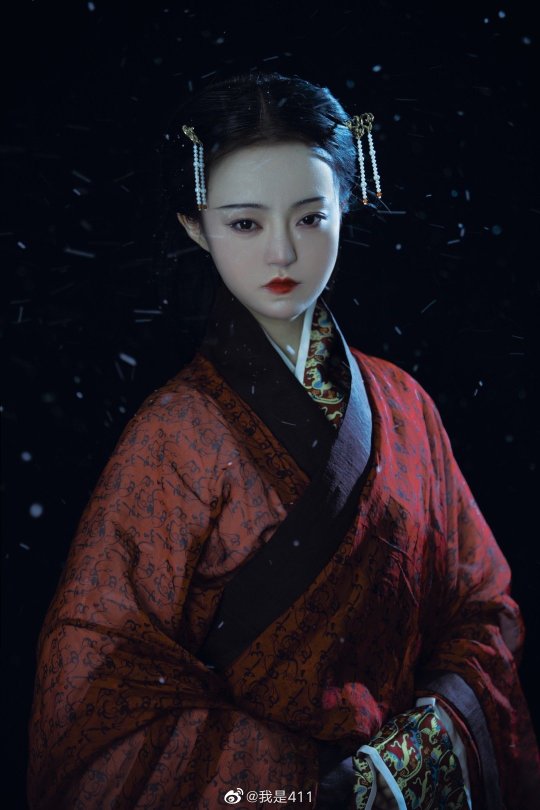
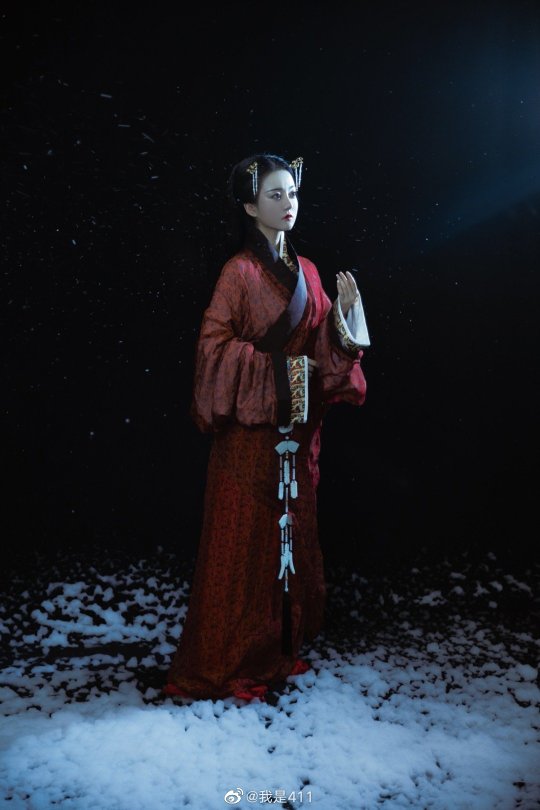


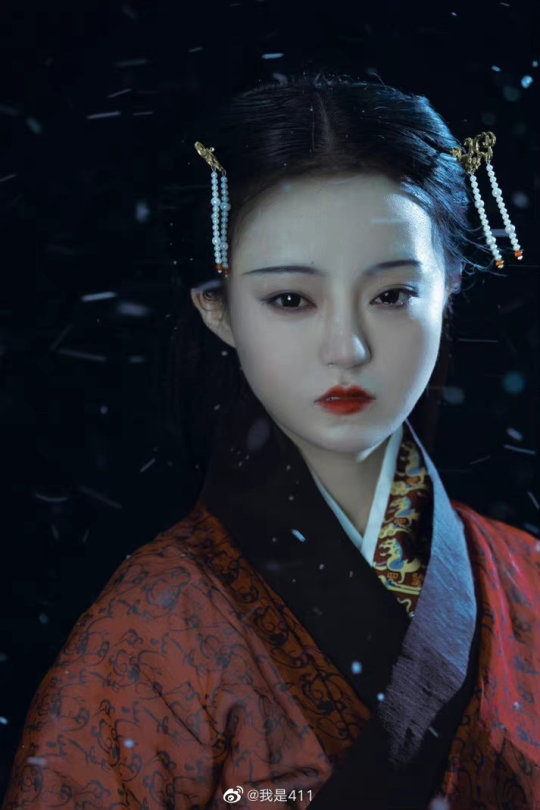
【Artifact Reference】
China Western Han Dynasty Painted Female Figurines (early and middle period of Western Han)
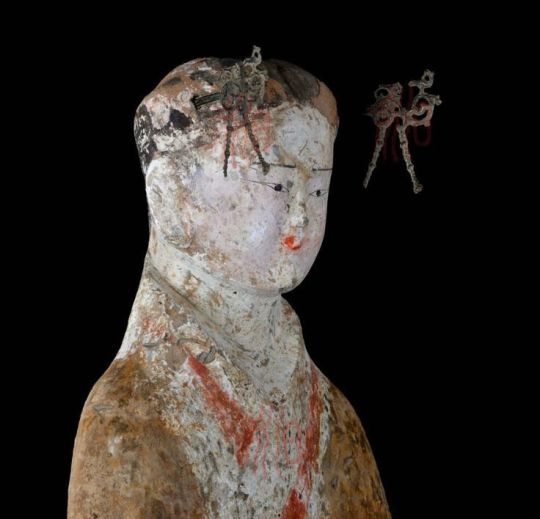
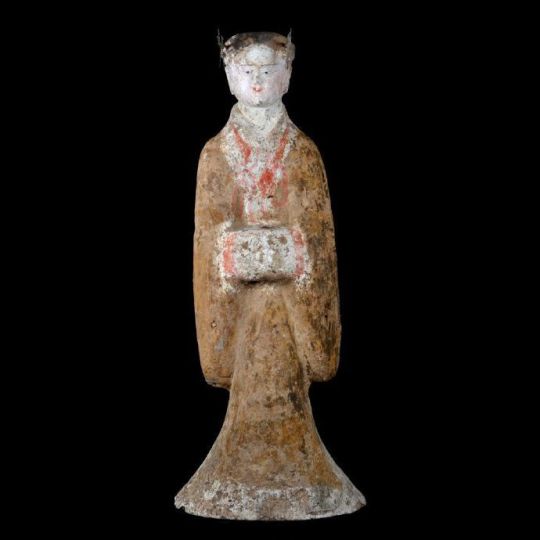
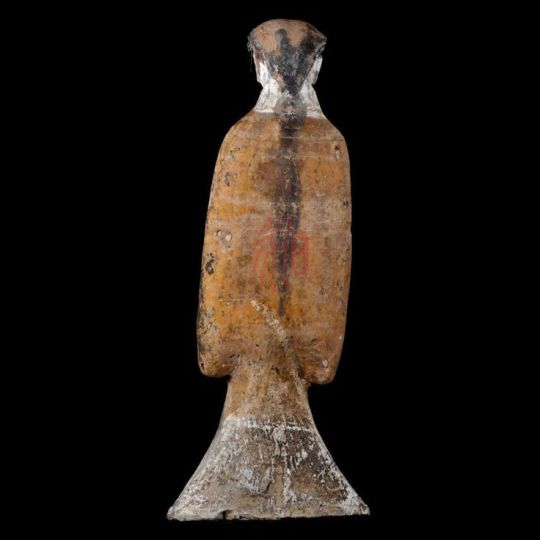
China National Museum Western Han Dynasty Woman Restoration Wax Sculpture

[Hanfu · 漢服]China Western Han Dynasty Chinese Traditional Clothing Hanfu :【Liu Xijun's Clothing Story|The first Heqin Princess (marriage alliance) who name was recorded at history actually are the daughter of a Criminal Prince?】
Cooperate with 【 @MYONS弥玥泉 Miyuequan hydrating spray 】
————–
【History About Princess Xijun of Han Dynasty 】
Liu Xijun (Chinese: 劉細君;123?–101 BC), also known as Princess Xijun (細君公主), Princess of Jiangdu (Chinese: 江都公主) or the Princess of Wusun (Chinese: 烏孫公主), was a princess of the Han dynasty sent to marry the King of Wusun(烏孫) as marriage alliance. A poem said to be by her is one of the earliest known Chinese poems attributable to a named woman.
Liu Xijun was the daughter of the King of Jiangdu (in modern-day Yangzhou, Jiangsu), Liu Jian (劉建) and granddaughter of Liu Fei, brother of Emperor Wu of Han. Xijun was orphaned while still an infant. Her father was described as incestuous, cruel and depraved, and had to commit suicide after being implicated in a rebellion. Her mother was also executed the same year for “practicing witchcraft”. As daughter of disgraced parents, she would likely have a low status at the Han court.
In 105 BC, Xijun's status was elevated and she was made a princess by Emperor Wu(漢武帝). The emperor wanted to send her off to marry the king (Kunmi or Kunmo) of the Wusun, Liejiaomi (猎驕靡), with the intention of forming an alliance with the Wusun and breaking up the confederacy of the Xiongnu. After a gift of 1,000 horses from the Wusun were sent to the Han court, she was sent to the Wusun 5,000 miles away in the Ili valley area with a retinue of 100 officials, eunuchs, servants and carriages. After her marriage, she was made Lady of the Right, a position subordinate to the Lady of the Left who was of Xiongnu origin.
However, her husband was elderly, she rarely saw him and could not communicate with him. Two years after she married to Wusun King, The Wusun King died. Most of the ancient nomadic had the custom of "Shouji Marriage/ Widow inheritance(收继婚)"which mean a custom that compulsory marriage of a widow to a brother of her deceased husband etc. In the case of the royal family, it is necessary to marry the next King. Xijun is the King's Lady, after the king's death, she needs to marry the next king according to the custom, and the next king was her husband grandson Cenzou (岑陬).
Although Xijun protested such remarriage which was considered improper in Han Chinese custom and beg to Emperor Wu (漢武帝) to let her return to Han, the Emperor Wu (漢武帝) replied that she should comply as the alliance with Wusun was deemed necessary to vanquish the Xiongnu (匈奴). She duly married Cenzou, who became king after Liejiaomi died. She had a daughter with him in 102 BC, and died the following year.She died at the age of 21, and never returned to her country in her life. A further princess named Princess Jieyou was sent to marry Cenzou (岑陬) after her death.
-----------
A poem credited to Xijun is given in Hanshu:
【悲愁歌/ Song of Sorrow 】
悲愁歌吾家嫁我兮天一方,
My family married me off to the edge of the world
遠托異國兮烏孫王。
Far away in the strange land of the Wusun king
穹廬為室兮旃為牆,
A domed hut is my chamber, the felt my walls
以肉為食兮酪為漿。
Meat is my food, fermented milk my drink
居常土思兮心內傷,
Living here, I long for my land, and my heart aches
願為黃鵠兮歸故鄉。
Wishing I could be a yellow swan,and return to my old home
-----------
In the history that has lasted for hundreds of years, the marriage of princesses to foreign country/tribe has become a common diplomatic method. Countless women who shoulder the heavy trust of the empire and share the name of "Princess" go to foreign countries alone to complete the mission of unknown answer.Their fate is forced to conform to the torrent of the times, it is a sigh.
_______
🧚🏻Model&📸 Video : @我是411
👗Hanfu : @春谷山房 @丹青荟传统服饰
🔗Weibo:https://weibo.com/2040114485/M87FzECWs
_______
#chinese hanfu#Western Han Dynasty#Han Dynasty#Princess Xijun#chinese history#hanfu#chinese#chinese traditional clothing#chinese coustume#hanfu accessories#hanfu art#Chinese Culture#Wusun#zhiju#Shouji Marriage/ Widow inheritance(收继婚)#Emperor Wu(漢武帝)#marriage alliance princess#China History
102 notes
·
View notes
Photo

Painting of lotus by Li Shan 李鳝, one of the Eight Eccentrics of Yangzhou, circa 1750; currently in the Berkeley Art Museum.
1 note
·
View note
Text
[:en]Jinghua streamer, Han and Tang bronze mirror art exhibition, Yangzhou Museum[:zh]镜华流光,汉唐铜镜艺术展,扬州博物馆[:es]Proyección de arte de espejo de bronce de Jinghua, Han y Tang, Museo de Yangzhou[:ar]جينغ هوا غاسل، هان وتانغ البرونزية مرآة معرض الفن، متحف يانغتشو[:fr]Banderole de Jinghua, exposition d'art de miroir de bronze de Han et de Tang, musée de Yangzhou[:]
[:en]Jinghua streamer, Han and Tang bronze mirror art exhibition, Yangzhou Museum[:zh]镜华流光,汉唐铜镜艺术展,扬州博物馆[:es]Proyección de arte de espejo de bronce de Jinghua, Han y Tang, Museo de Yangzhou[:ar]جينغ هوا غاسل، هان وتانغ البرونزية مرآة معرض الفن، متحف يانغتشو[:fr]Banderole de Jinghua, exposition d’art de miroir de bronze de Han et de Tang, musée de Yangzhou[:]
[:en]
The Tang Dynasty is the prosperous period in the history of Chinese bronze mirrors. Bronze mirrors have rich connotation, diverse shapes, exquisite decoration and exquisite workmanship. They can be regarded as the model in the history of bronze mirrors. Bronze mirror style in the Tang Dynasty, in addition to using the previous generation of round, square, but also to create a sunflower…
View On WordPress
0 notes
Note
Hey Archy I need some help with a project I'm working on. I wanted a reflecting pool in a study I'm designing, but it ends up my professor hates water/reflecting pools. Is there any solutions you know of for a material that shimmers and reflects light like water does? I'm having trouble finding precedents myself. My professor also told me Toyo Ito did some cool things with bulletproof glass but I can't seem to find it? If you have any solutions that would be great
Not sure what project(s) he meant, although Toyo Ito’s Sendai Mediatheque merits more than one view, but here are four alternatives to water, but none have the unique shimmering qualities of water:

Yangzhou Zhongshuge Li Xiang
Black mirror glass floors

Bellelay Abbey La Mise en Abime Installation Romain Crelier
Used Motor Oil

Kaleidoscopic Ivy installation at The Sogetsu School of Ikebana Nendo
Stainless Steel shards

Latvian Museum of Art Processoffice and Andrius Skiezgelas Architecture
Clear glass
206 notes
·
View notes
Photo

One of the geniuses of Chinese painting, Shitao was born a prince in the Ming imperial family. In the turmoil following the dynasty's fall in 1644, he became an itinerant monk. After 1696, he settled in the city of Yangzhou, where he spent his late years as a professional painter. Shitao's paintings of this period are characterized by fluid brushwork and by moist, graded ink-tones.
As Shitao never visited the Luo-Fu Mountains in Guangdong province, his illustrations are largely imaginative. Long hoping to tour these mountains, he was inspired to paint them in twelve album leaves. Each scene was accompanied by textual description drawn from travelogues, and each depiction relies heavily on natural observation. Additionally, certain compositional elements, methods of contouring and foliage dotting all suggest the artist also drew from his knowledge of woodblock illustrations. The only genuine paintings remaining from the original set are the museum's four album leaves: "Mica Peak," "Three Peaks of the Upper Realm," "Solitary Azure Peak," and "Penglai Peak.
3 notes
·
View notes
Photo

Plum Blossoms and Peonies, Gao Fenghan, 1741, Cleveland Museum of Art: Chinese Art
This was painted in 1741, the year when Gao decided to leave the south and return home to Shandong province. Prior to this, he was active in Suzhou and Yangzhou, making a living from his art after he had lost his official position. It has been suggested that this work was likely a song of farewell, borrowing the quiet simplicity of the plum blossoms and the ephemeral splendor of the peonies to express personal feelings. One of Gao's left-handed paintings, this work was done after the crippling of his right hand in 1737. As Gao remarked ironically, "the crudeness, resistance, sluggishness, and awkwardness [of the brushwork] are totally unparalleled and unattainable by the right hand." Size: Image: 26 x 96.2 cm (10 1/4 x 37 7/8 in.); Overall: 28.9 x 534.7 cm (11 3/8 x 210 1/2 in.) Medium: handscroll, ink on paper
https://clevelandart.org/art/1980.13
4 notes
·
View notes
Text
Farewells
故人西辭黃鶴樓,烟花三月下揚州。 孤帆遠影碧空盡,唯見長江天際流。
We say farewell at Huanghelou — The flow’rs of March befall Yangzhou. A single boat sails far from sight, Alone I watch the Changjiang flow.
Li Bai, “Sending off Meng Haoran to Guangling (Yangzhou) at the Yellow Crane Tower”
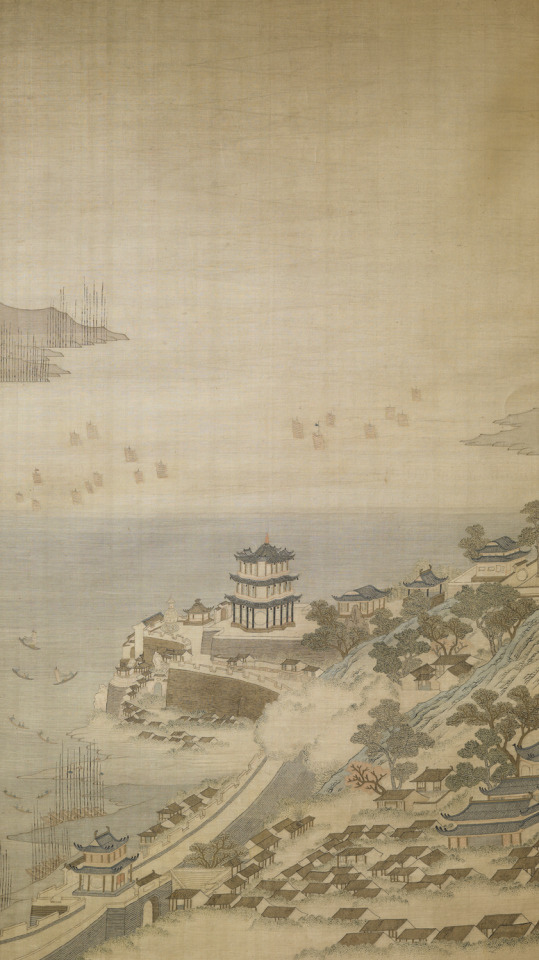
“Yellow Crane Tower,” silk tapestry (Qing), Shanghai Museum
1 note
·
View note
Photo

Plum Blossoms, Hanging scroll by Wang Shishen 汪士慎, China, 1747
Cleveland Art Museum
Provenance: The Kelvin Smith Collection. Donated by Mrs. Kelvin Smith in 1985.
142.7 x 75.5 cm (56 3/16 x 29 3/4 in.)
Wang Shishen 汪士慎 (1686–1759) was a painter and calligrapher who lived during the Qing Dynasty. He was born poor but made a good living as a painter. Wang was noted for his great paintings of plum blossoms and became known as one of the Eight Eccentrics of Yangzhou.
[text source: @wikipedia]
#hanging scroll#ink#art#china#18th century#plum blossom#calligraphy#poem#museum#public domain#art history
20 notes
·
View notes